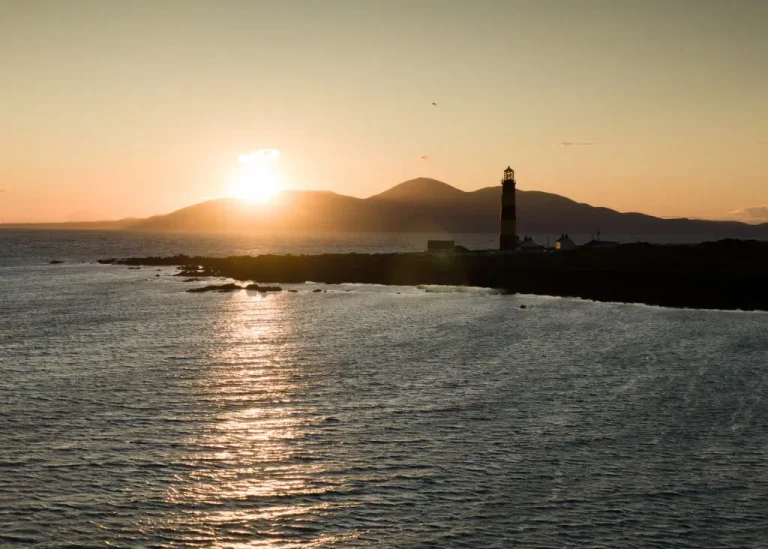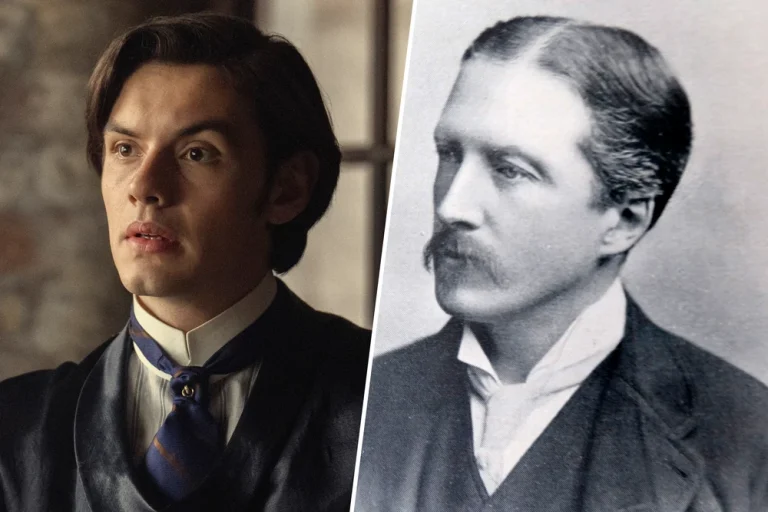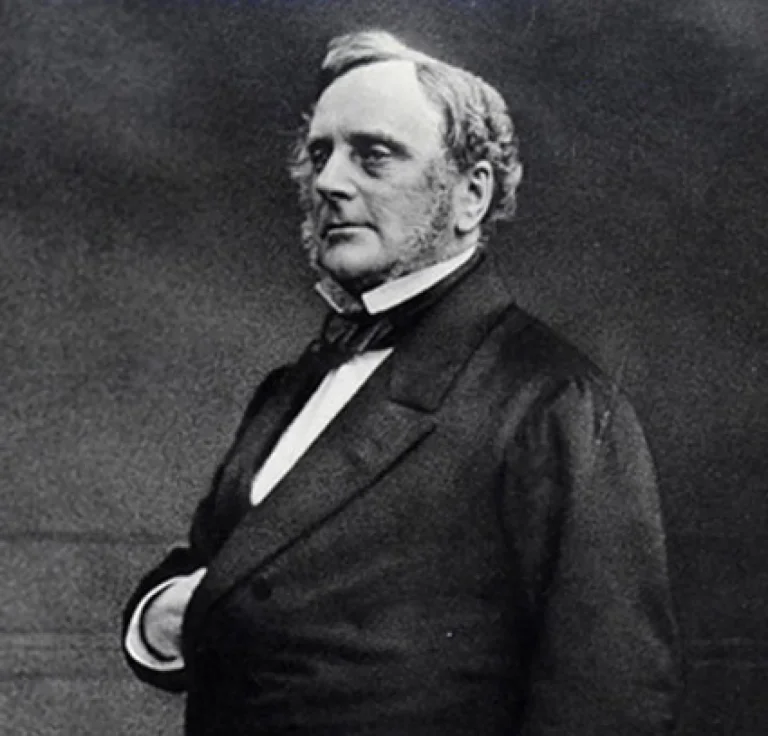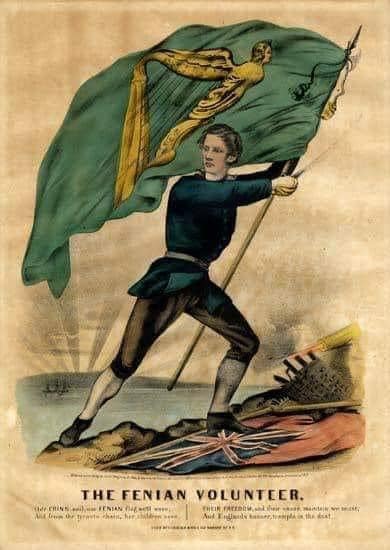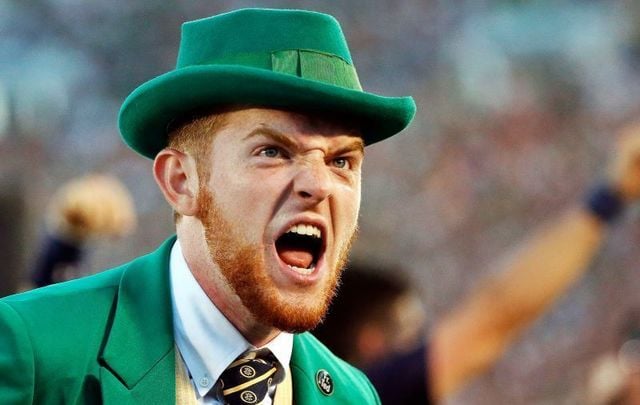

The University of Notre Dame is one of the most iconic institutions in American collegiate sports, instantly recognizable by its “Fighting Irish” moniker and the leprechaun mascot.
For those unfamiliar with its unique history, it often begs the question:
Why is Notre Dame considered Fighting Irish when its name, “Notre Dame du Lac,” is clearly French for “Our Lady of the Lake”? This seemingly contradictory identity is, in fact, a rich tapestry woven from immigration, religious persecution, athletic grit, and a powerful embrace of an ethnic identity in the face of adversity.
This article will delve deep into the fascinating story behind Notre Dame’s Fighting Irish meaning, exploring the historical connections that tie a distinctly French-named Catholic university to its strong Irish identity.
We’ll look at the early days of Notre Dame football, examine the various theories behind the nickname, address the common confusion of Is Notre Dame Irish or French, and even touch upon the ongoing discussions around whether is the Fighting Irish offensive.
Why is Notre Dame Referred to as Irish? Unpacking the Historical Roots
To understand why is Notre Dame referred to as Irish, we must journey back to the mid-19th century. While the University was founded in 1842 by French missionary priest Edward Sorin, C.S.C., and his Brothers of Holy Cross, it quickly became a beacon for Irish Catholic immigrants in America.
During this period, Irish immigrants faced significant discrimination and prejudice in the United States. They were often denied opportunities, subjected to anti-Catholic sentiment, and relegated to the lowest rungs of society. For many Irish Catholic families, Notre Dame offered a crucial pathway to education, social mobility, and a haven where their faith was embraced, not condemned. The student body, faculty, and even the Holy Cross order itself began to feature a strong and growing Irish presence. Many of Father Sorin’s successors as university president were also of Irish descent, further solidifying this connection.
So, while the founders were French, the university’s demographic and cultural identity became inextricably linked with the Irish Catholic immigrant experience in America. This explains what do the Irish have to do with Notre Dame – they were, in many ways, the lifeblood of the institution, providing its students, its spirit, and its unique cultural fingerprint in the American landscape.
The Origins of a Legend: Why is Notre Dame University the Fighting Irish?
The exact genesis of the “Fighting Irish” nickname is shrouded in various legends, but most accounts point to a combination of factors that crystallized in the early 20th century, particularly around Notre Dame football.
One popular theory connects the nickname to the Civil War’s legendary “Irish Brigade,” a Union Army unit composed primarily of Irish immigrants. Their chaplain, Father William Corby, C.S.C., later became the third president of Notre Dame and famously granted general absolution to the troops before the Battle of Gettysburg. The bravery and tenacity of these “Fighting Irish” soldiers, with a direct link to the university, is one compelling origin story.
Another frequently cited anecdote comes from a 1909 football game against Michigan. Trailing at halftime, a Notre Dame player (some accounts name him as Louis “Shorty” Long) allegedly rallied his teammates, many of whom had distinctly Irish surnames like Dolan, Kelly, and Ryan, with the cry, “What’s the matter with you guys? You’re all Irish and you’re not fighting worth a lick!” Notre Dame famously came back to win that game, and sports reporters, having overheard the remark, began to use “Fighting Irishmen” in their reports.
A third significant factor relates to the socio-political climate of the early 20th century. During the 1910s and 1920s, anti-Catholic and anti-Irish sentiments were rampant in the United States, often manifesting in derogatory taunts directed at Notre Dame’s teams by opposing fans and the press, who would call them “Catholics,” “Papists,” or “Dirty Irish.” Rather than shying away, the university and its athletic teams began to embrace these slurs, turning what was intended as an insult into a badge of honor. The “Fighting Irish” meaning thus evolved from a derogatory term into a symbol of resilience, tenacity, and pride in the face of prejudice.
The visit of future Irish President Éamon de Valera to Notre Dame in 1919, seeking support for Irish independence, is also believed to have further solidified the moniker on campus. By 1927, university president Reverend Matthew J. Walsh officially adopted “The Fighting Irish” as the school’s nickname, stating it embodied “the spirit that we like to see carried into effect by the various organizations that represent us on the athletic field.” This solidified the nickname, cementing its place in the annals of college sports.
Is Notre Dame Irish or French? The Name vs. The Identity
This is a core question: Is Notre Dame Irish or French? As established, the university’s name, “Notre Dame du Lac,” is indeed French, directly translating to “Our Lady of the Lake,” referring to the Virgin Mary and the nearby St. Mary’s Lake. This reflects the French origins of its founding religious order, the Congregation of Holy Cross.
However, the “Fighting Irish” identity is deeply rooted in the historical experience of Irish Catholic immigrants in the U.S. and their profound connection to the university. So, while the name is French, the cultural identity and spirit that defines its athletic teams and much of its alumni base is undeniably Irish American. It’s a testament to how history, demographics, and shared experiences can shape an institution’s identity far beyond its initial naming.
This dual heritage is a unique aspect of Notre Dame, and it’s a topic that frequently comes up in discussions like why is Notre Dame considered Fighting Irish Reddit threads, where fans and alumni often share their personal connections to the name and its historical significance.
The Fighting Irish Symbol: The Leprechaun and Its Meaning
The iconic leprechaun, with his “dukes up” and a determined expression, is the most recognizable visual representation of the Fighting Irish symbol. While the nickname became official in 1927, the leprechaun mascot, as we know it today, was formally adopted in 1965. Prior to that, Notre Dame’s teams were sometimes represented by Irish Terrier dogs (named “Clashmore Mike”).
The leprechaun embodies the Fighting Irish meaning: a tenacious, feisty, and determined spirit. He represents the underdog mentality, the resilience, and the willingness to stand up against greater odds – qualities that the Irish immigrant community often needed to exhibit in America. His posture, ready for a fight, symbolizes the “never-say-die” attitude that became a hallmark of Notre Dame football teams, particularly under legendary coach Knute Rockne.
Is the Fighting Irish Offensive? A Modern Discussion
In an era where many sports teams are re-evaluating their mascots and nicknames, the question is the Fighting Irish offensive occasionally arises. Critics sometimes argue that the leprechaun and the “fighting” aspect perpetuate negative stereotypes about Irish people, associating them with belligerence or caricatured folklore.
However, the University of Notre Dame and the vast majority of its alumni and the Irish American community strongly defend the nickname. Their argument hinges on the historical context: the name was embraced by an institution predominantly serving Irish Catholics at a time when they faced intense discrimination. It was a defiant act of self-empowerment, transforming a derogatory slur into a symbol of pride, resilience, and strength.
As university officials have stated, “In both upraised fists of the leprechaun mascot and the use of the word ‘fighting’, the intent is to recognize the determination of the Irish people and, symbolically, the university’s athletes.” They view it as a celebration of genuine Irish heritage and a tribute to the “indomitable spirit, a commitment, never tentative, always fully committed, to life itself.” The history behind the nickname demonstrates agency – the Irish American community at Notre Dame chose to embrace and redefine the term, rather than having it imposed upon them by an outside, dominant culture.
This nuance is crucial in understanding why the “Fighting Irish” nickname is widely accepted and celebrated by the community it represents, differing significantly from other mascots that have faced legitimate accusations of cultural appropriation or racist caricature.
Did Notre Dame Ever Play in Ireland? A Global Connection
Given the profound Irish connection, it’s fitting that Did Notre Dame ever play in Ireland? The answer is a resounding yes! Notre Dame has a proud tradition of playing American football games in Ireland, further cementing its global ties and celebrating its heritage.
The first instance was the “Shamrock Classic” in 1996, where Notre Dame played Navy at Croke Park in Dublin. This was followed by the “Emerald Isle Classic” in 2012, again against Navy, this time at Aviva Stadium. Most recently, Notre Dame played Navy in Dublin again in August 2023 at Aviva Stadium, a highly anticipated event that drew tens of thousands of fans from the United States and around the world, providing a significant boost to Irish tourism. These games are not just athletic contests; they are cultural exchanges and powerful affirmations of the University’s unique identity.
The Enduring Spirit of the Fighting Irish
Why is Notre Dame named Notre Dame? Because of its French Catholic founders’ devotion to the Virgin Mary. Why is Notre Dame considered Fighting Irish? Because of the profound historical journey of Irish Catholic immigrants, who found a home, an education, and a platform for pride at the university.
The “Fighting Irish” is more than just a nickname for a football team; it is a symbol of resilience, determination, and the transformative power of embracing one’s heritage. It tells a story of overcoming prejudice, forging a unique identity, and achieving greatness on a global stage. From the spirited cheers of Notre Dame football fans to the iconic leprechaun, the spirit of the Fighting Irish continues to resonate, celebrating a rich past while inspiring future generations. It’s a powerful reminder that history, identity, and sport can intertwine in the most extraordinary ways.
FAQs: Your Questions About the Fighting Irish Answered
Why is Notre Dame referred to as Irish?
Notre Dame is referred to as Irish primarily due to its historical connection to Irish Catholic immigrants in the United States. While founded by French priests, the university became a crucial educational and cultural haven for the Irish diaspora, leading to a strong Irish presence among its students, faculty, and leadership.
Why is Notre Dame University the Fighting Irish?
The nickname “Fighting Irish” emerged in the early 20th century due to a combination of factors: the tenacious spirit of its athletic teams, the large number of Irish American players, the association with the Civil War’s “Irish Brigade,” and crucially, as a defiant embrace of an ethnic slur hurled by opponents during a period of anti-Irish and anti-Catholic prejudice. The university officially adopted the name in 1927.
What do the Irish have to do with Notre Dame?
The Irish have a deep historical connection with Notre Dame. The university became a significant institution for Irish Catholic immigrants seeking education and upward mobility in a discriminatory American society. Many students, faculty, and presidents were of Irish descent, making the university a cultural home for the Irish American community.
Why is Notre Dame the Fighting Irish when Notre Dame is French?
Why is Notre Dame Irish and not French? The name “Notre Dame du Lac” is French, meaning “Our Lady of the Lake,” reflecting its French Catholic founders. However, the “Fighting Irish” moniker reflects the university’s strong historical ties to Irish Catholic immigrants who formed a significant portion of its student body and contributed to its athletic identity and spirit, particularly in response to anti-Irish prejudice.
What is the story behind the Notre Dame Fighting Irish?
The story is multifaceted. It includes: theories about the Civil War’s “Irish Brigade” (whose chaplain became a Notre Dame president); a legend from a 1909 football game where an Irish player rallied his team; and most significantly, the university’s embrace of a derogatory term (“Fighting Irish”) used by opponents during a period of intense anti-Irish and anti-Catholic sentiment. This transformation of a slur into a symbol of pride, resilience, and tenacity cemented the Fighting Irish meaning.
Why is Notre Dame’s mascot the Fighting Irish a problem?
Some critics argue that the leprechaun mascot and the term “Fighting Irish” perpetuate negative stereotypes of Irish people, associating them with belligerence or caricature. However, the university and the majority of the Irish American community strongly defend it, viewing it as a symbol of pride, resilience, and a defiant reclamation of an identity that was once used to disparage them. They emphasize it was adopted by the community it represents.
Is the Hunchback of Notre Dame Irish?
No, the character the Hunchback of Notre Dame (Quasimodo) is not Irish. He is a fictional character from Victor Hugo’s 1831 novel Notre-Dame de Paris, set in Paris, France. The novel’s title refers to the Notre Dame Cathedral in Paris, not the University of Notre Dame in the United States.
What is the Irish guy on the Notre Dame logo?
The Irish guy on the Notre Dame logo is a leprechaun. He is depicted with his “dukes up,” ready to fight, symbolizing the tenacious, never-say-die spirit of the “Fighting Irish” athletic teams. He became the official mascot in 1965.
What is the Notre Dame fighting Irish symbol?
The primary Notre Dame Fighting Irish symbol is the leprechaun mascot, depicted with clenched fists, ready for battle. This symbol embodies the fighting spirit, resilience, and pride associated with the team and its Irish American heritage.
Did Notre Dame ever play in Ireland?
Yes, Notre Dame football has played several games in Ireland. They played Navy in Dublin in 1996 (Shamrock Classic), 2012 (Emerald Isle Classic), and most recently in August 2023 at Aviva Stadium, further solidifying their connection to Ireland.
